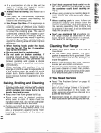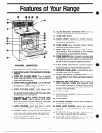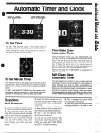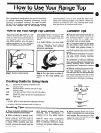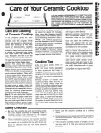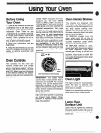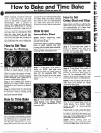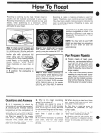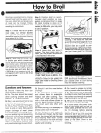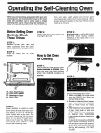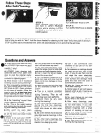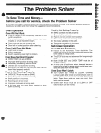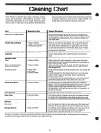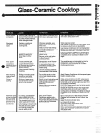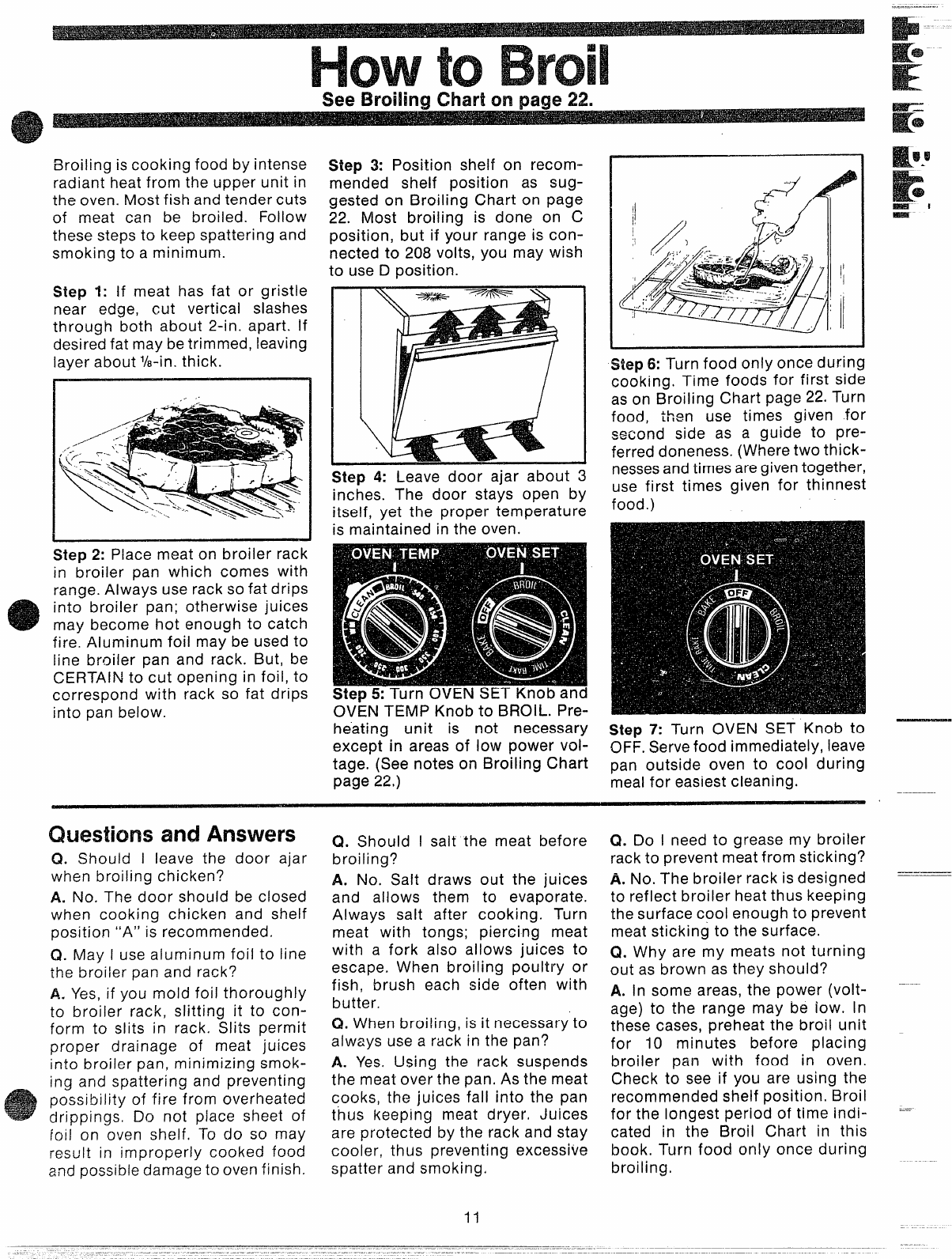
seeEh’oiihcllchart OlnlDaae 22
Broiling is cooking food by intense
radiant heat from the upper unit in
the oven. Most fish and tender cuts
of meat can be broiled. Follow
these steps to keep spattering and
smoking to a minimum.
Step 1: If meat has fat or gristle
near edge,
cut vertical slashes
through both about 2-in. apart. If
desired fat may be trimmed, leaving
layer about
1/8-in. thick.
Step 2: Place meat on broiler rack
in broiler pan which comes with
range. Always use rack so fat drips
into broiler pan; otherwise juices
may become hot enough to catch
fire: Aluminum foil may be used to
line broiler pan and rack. But, be
CERTAIN to cut opening in foil, to
correspond with rack so fat drips
into pan below.
Step 3: Position shelf on recom-
mended shelf position as sug-
gested on Broiling Chart on page
22. Most broiling is done on C
position, but if your range is con-
nected to 208 volts, you may wish
to use D position.
Step 4: Leave door ajar about 3
inches. The door stays open by
itself, yet the proper temperature
is maintained in the oven.
OVEN TEMP Knob to BROIL. Pre-
heating unit is not necessary
except in areas of low power vol-
tage. (See notes on Broiling Chart
page 22,)
.+’/
1:
I
, II
Step & Turn food only once during
cooking. Time foods- for first side
as on Broiling Chart page 22. Turn
food, then use times given for
second side as a guide to pre-
ferred doneness. (Where two thick-
nessesand times are given together,
use first times given for thinnest
food.)
Step 7: Turn OVEN SET Knob to
OFF. Serve food immediately, leave
pan outside oven to cool during
meal for easiest cleaning.
Qt’iestkmsandAnswers
Q. Should I leave the door ajar
when broiling chicken?
A. No. The door should be closed
when cooking chicken and shelf
position “A” is recommended.
G?.May I use aluminum foil to line
the broiler pa~ and rack?
A. Yes, if you mold foil thoroughly
to broiler rack, slitting it to con-
form to slits in rack. Slits permit
proper drainage of meat juices
into broiler pan, minimizing smok-
ing and spattering and preventing
possibility of fire from overheated
drippings. Do not place sheet of
(oil on oven shelf, To do so may
result in improperly cooked food
and possible damage to oven finish.
Q. Should I salt the meat before
broiling?
A. No. Salt draws out the juices
and allows them to evaporate.
Always salt after cooking. Turn
meat with tongs; piercing meat
with a fork also allows juices to
escape. When broiling poultry or
fish, brush each side often with
butter.
Q. When broiling, is it necessary to
always use a rack in the pan?
A. Yes+Using the rack suspends
the meat over the pan. As the meat
cooks, the juices fall into the pan
thus keeping meat dryer. Juices
are protected by the rack and stay
cooler, thus preventing excessive
spatter and smoking,
Ct. Do I need to grease my broiler
rack to prevent meat from sticking?
A. No. The broiler rack is designed
to ref Iect broiler heat thus keeping
the surface cool enough to prevent
meat sticking to the surface.
Q. Why are my meats not turning
out as brown as they should?
A. In some areas, the power (volt-
age) to the range may be iow. In
these cases, preheat the broii unit
for 10 minutes before piacing
broiier pan with food in oven.
Check to see if you are using the
recommended sheif position. Broii
for the longest period of time indi-
cated in the Broii Chart in this
book. Turn food oniy once during
broiling.
—



